
Nurse Uniforms
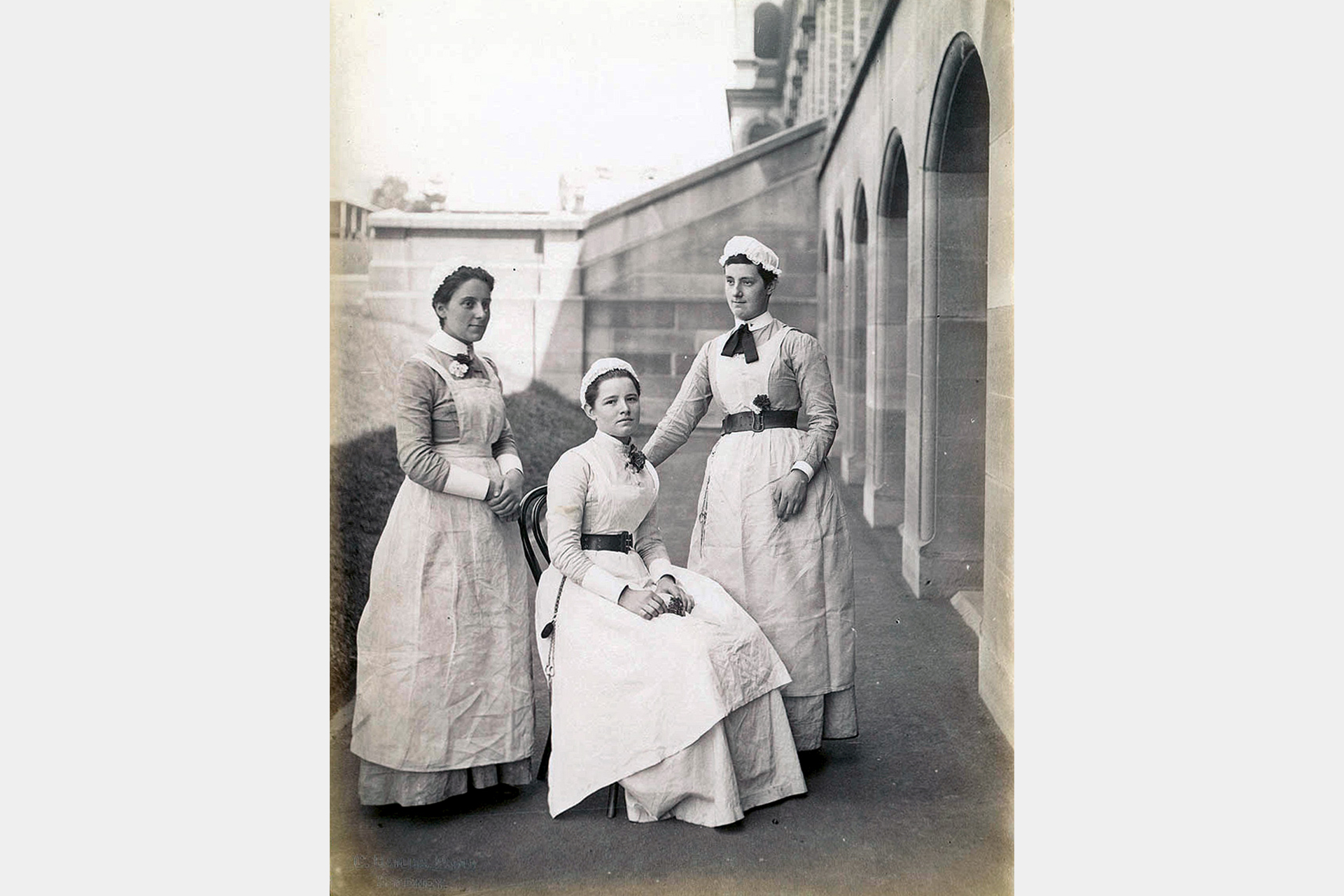
Nursing uniforms have changed dramatically over time. From 1887-1929, only one seamstress was employed at RPA to make all indoor and outdoor uniforms, and nurses presented themselves for new fittings, particularly when promoted.
- 1882 – RPA nurses wore dresses which touched the floor
- 1890s – dresses reached the ankles
- 1924 – dresses were half-way up the knee
- 1920s – Sister's uniforms were of 'coat-frock' type with white shoes
- Lilac haircord prints for dresses for Probationers for the first 50 years, then blue
- White aprons worn by RPA Matron, Sisters, Nurses, with dresses and aprons gathered at the waist
- Wide belts with silver buckles, a watch pinned to the bodice under apron, long sleeves, white cuffs and collars, black stockings and shoes
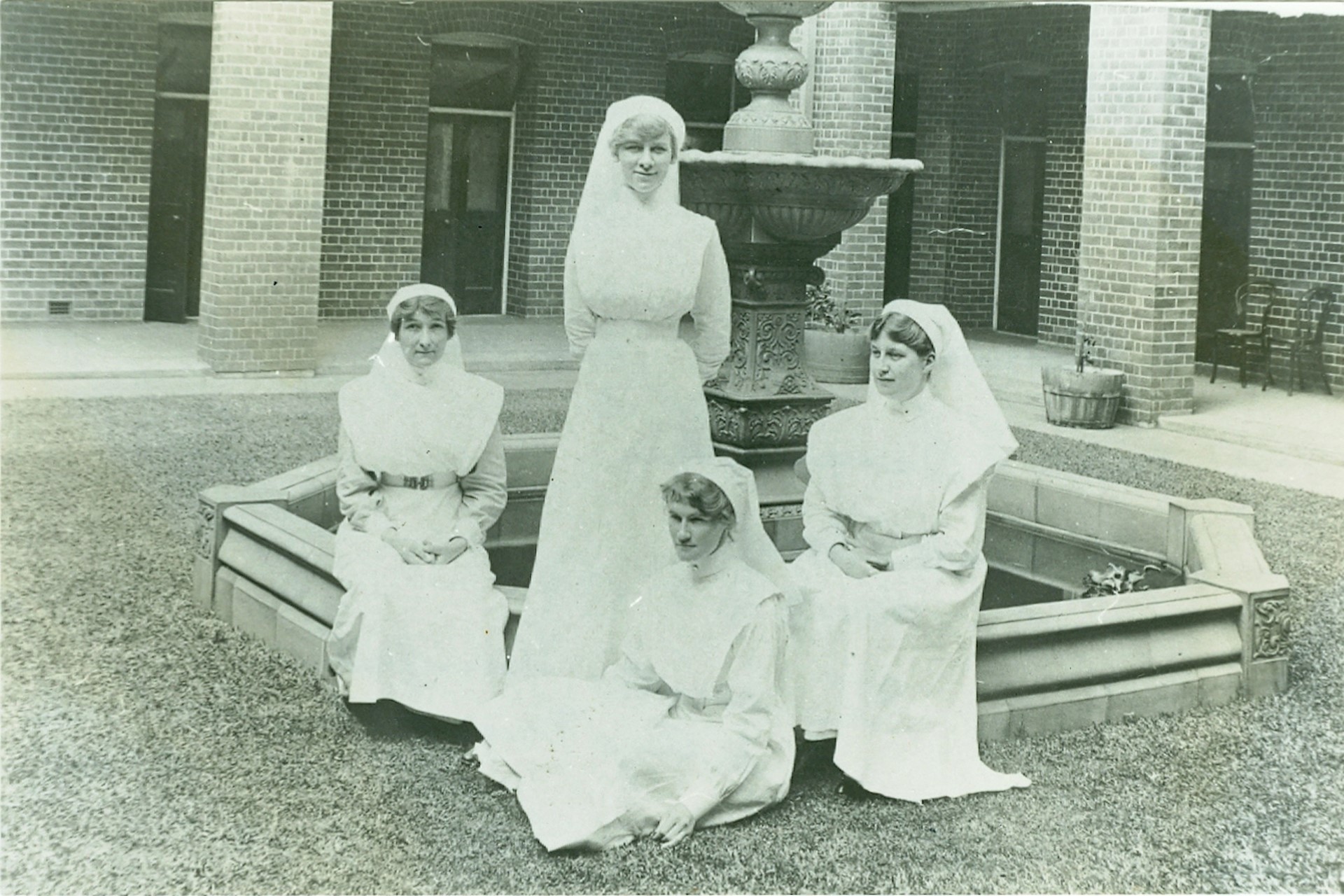
Up until WWI, outdoor dress was worn whenever a nurse left the hospital. Private nurses also wore an outdoor uniform. It had stiff white cuffs on long sleeves under a cloak, a small bonnet tied under the chin with strings, and a long tail hanging to the waist at the back. Nurses wore it with pride and thought it dignified.
Caps differed according to the level of nurse training and status. The first kinds were round and small on the top of the head with hair worn long and pinned up with hair pins. Sister's caps were similar but had long tails edged with lace hanging down the back. After WWI, Sisters wore a square of organdie folded into a triangle and pinned around the head. Nurses' caps then changed from round to one that enclosed the entire head. Small marks on the cap reflected the training year to which the nurse belonged. In the 1930s-40s Preliminary Training School nurses wore a white butterfly cap. One 1930s nurse trainee notes,
We were called butterflies, not because we resembled these vivid, delicate creatures in any way but because our caps were tied at the back like butterfly wings.
The collars and cuffs were made of starched linen and were very scratchy. The collar left a mark around the neck. One nurse trained in the 1930s described,
'We wore a mauve gingham uniform covered by a stiffly starched white apron and a stiffer collar which was attached separately. A chafed neck caused by this collar and sore feet from walking on hard floors for long hours in new shoes is my clearest recollection of those days'.
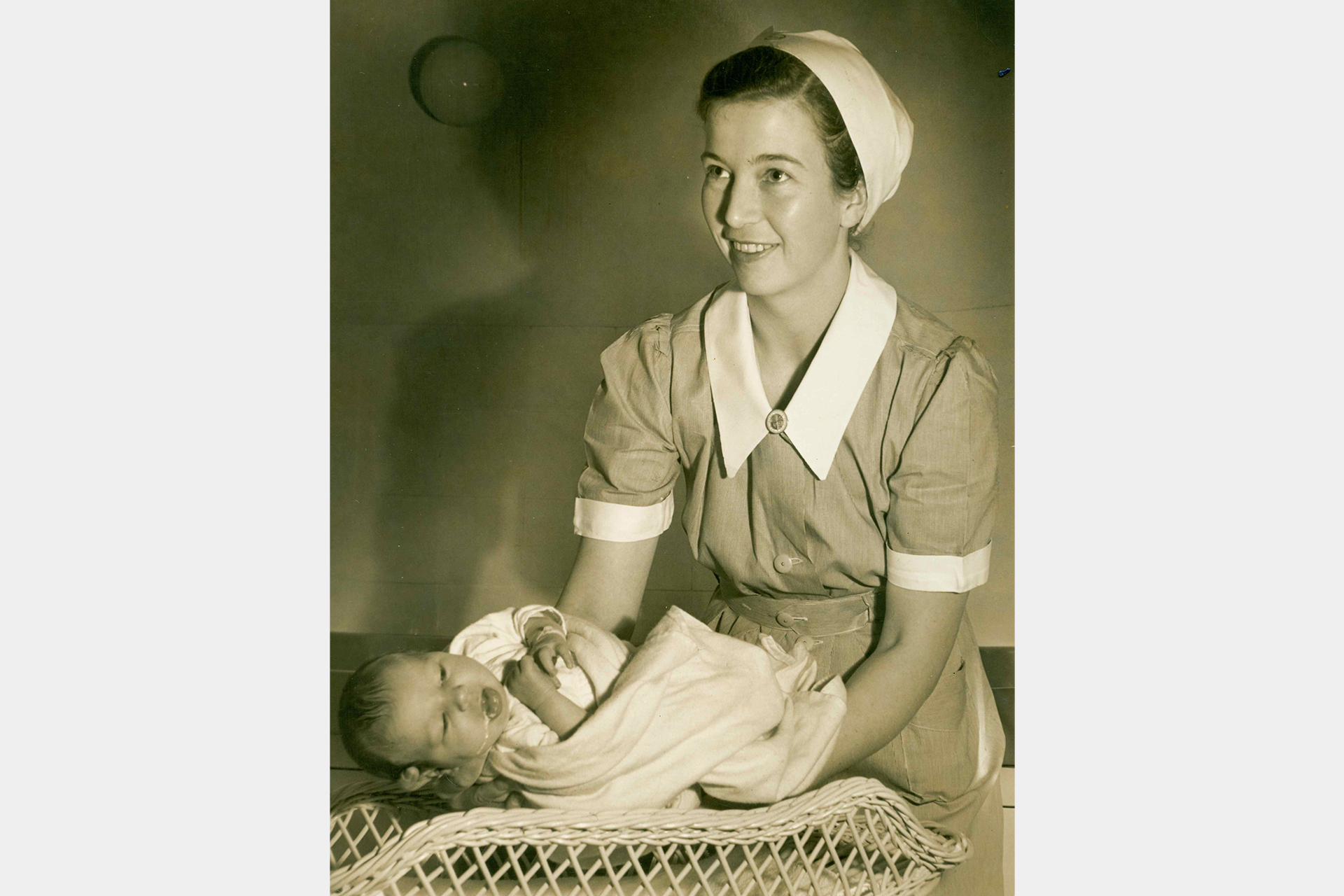
During WWII Preliminary Training School nurses were given uniforms by the hospital, which after first year training consisted of blue checked uniforms with aprons. Nurses' uniforms required six ration coupons and each received ten uniforms in first year in 1943.
One of the trainee nurses of the early 1950s recalled,
Although not particularly enthralled with our uniforms, Tutor Sister told us to treat them as though we were wearing protective armour. 'Patients will have much more confidence in you because you are wearing a uniform,' she said. 'They will tell you things they never would if you were in plain mufti.' This we found to be true.
Nurses wore long sleeves until the mid-1960s. However, they were allowed to take off their cuffs and roll up their sleeves while they worked. As one nurse remarked in the early 1960s,
'I'd like a new [style] of uniform. Our shoes and caps are ideal, but I think a short-sleeved dress would be nice.' Another nurse said, 'I like [the uniform] because I like tradition. The hospital has a lot of history behind it and the uniform's historic.' Another despaired of nurses getting measured to check that their uniforms weren't too short. 'Everyone falls about laughing now when I say we had to roll down our sleeves, put on our cuffs, and place hands behind our back before addressing our seniors'.
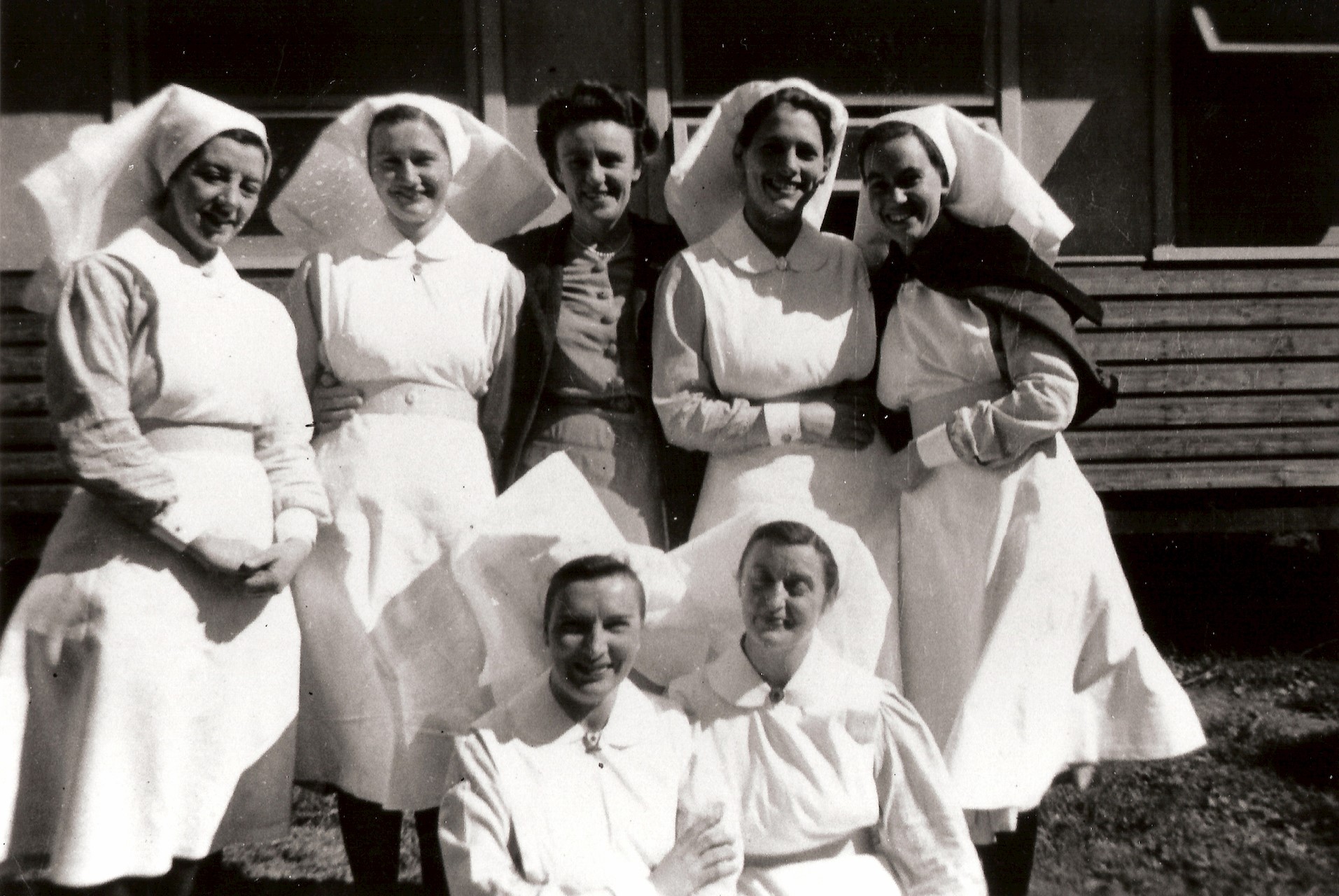
A nurse starting in 1964 remembered her first time donning the uniform,
'We were quickly to change into our new uniforms, called 'blueys'. A Sister was allocated to help us get ready and I almost cried trying to pull the strings through the cap. I was all thumbs and the cap was so starched that I was scared of breaking the string. In the end the Sister had to fix it and very sweetly explained that they were often difficult, but I'd get used to doing it. After being fitted in our daggy, four inches below the knee, uniform with white ultra starched collar and cuffs, clasped together with a stud and caps sitting flat on our head, we were herded into the sitting room to be addressed by Matron'.
In the 1970s new uniforms were introduced for the first time since WWII. The uniform contained no starch. It was a pale blue coat-dress with white stockings and a white cap with lace edges, the year of training demarcated by blue bars. This uniform was difficult to keep clean and stained easily. Registered nurse uniforms were also newly designed as a coat-dress in racing blue. The traditional large triangular veil was replaced by a veil doubled over, called a stovepipe veil.
A nurse who began her training in 1982 recalled,
We wore the State government stripy blue uniform with a little frilly cap. The cap wasn't always so flattering but it was great for bad hair days.
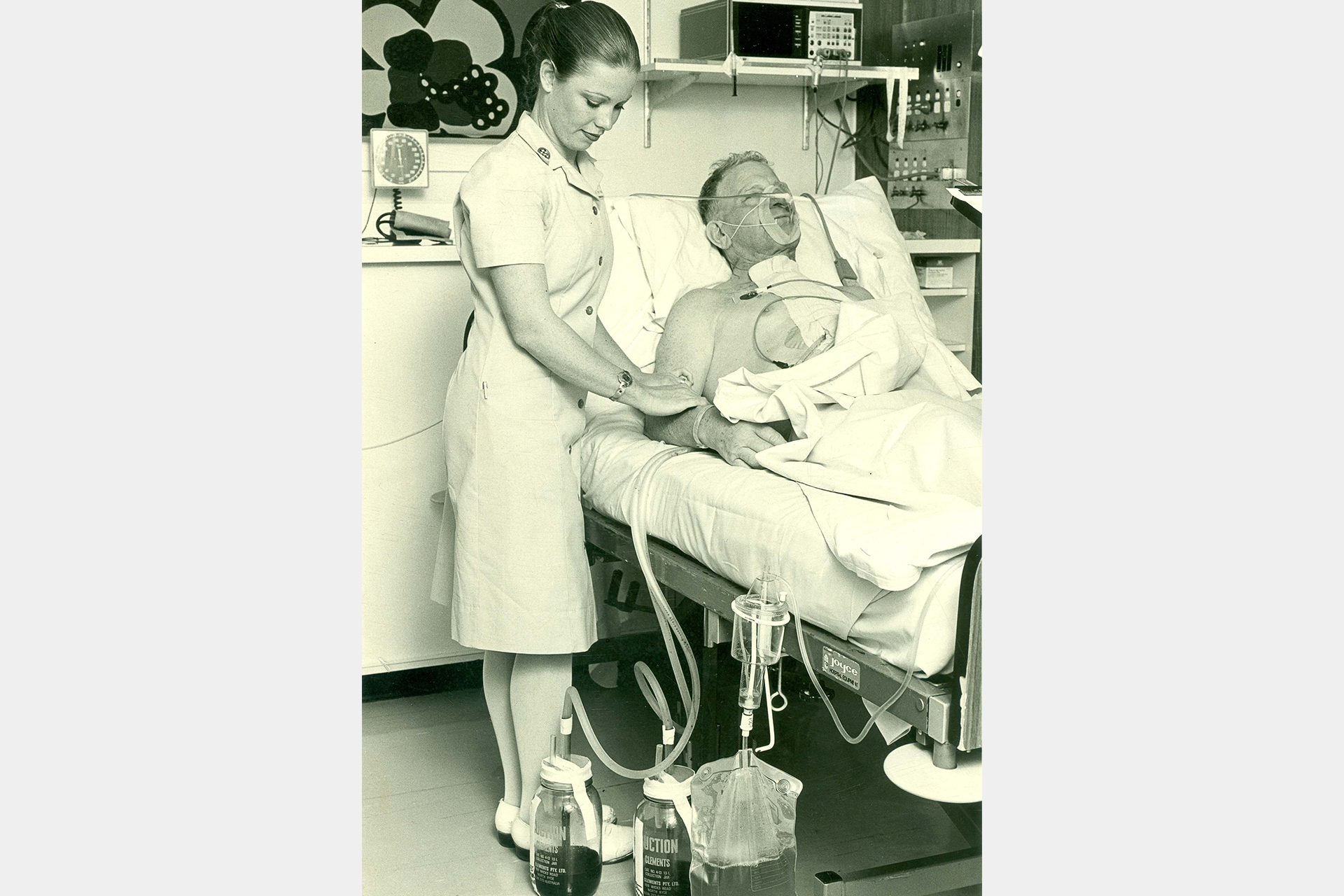
Sources: 'The First Fifty Years' by Dorothy Mary Armstrong (1965); 'The Second Fifty Years' by Helen Croll Wilson (2000); The Life and Times of Royal Prince Alfred Hospital, Sydney, Australia by Muriel Knox Doherty (1996); Australasian Trained Nurses' Journal; The Sydney Morning Herald; RPA Museum collection.